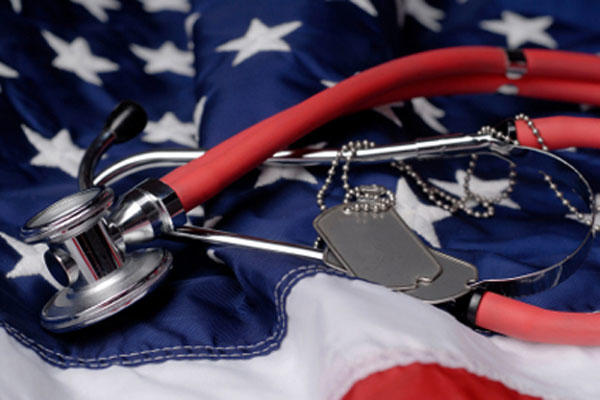ANCHORAGE, Alaska -- Shifting military family members back into military hospitals and clinics for health care is a top priority, the head of the Defense Health Agency said during a visit here Thursday.
"All the military services continue to be very interested in the recapture effort," Navy Vice Adm. Raquel Bono, DHA's director, said during a wide-ranging interview with Military.com at the hospital on Joint Base Elmendorf-Richardson.
"We feel like the military health system can best take care of our patients," she added. "We want to be there for our patients, so that recapture effort is ongoing and very robust right now."
Tricare Prime, used by about 1.5 million active-duty family members, requires beneficiaries to be assigned to a primary care provider within the military treatment facility if one is available. But if the closest facility is at capacity or the family is pushed into the community for care for some other reason, those families may instead be seen by a civilian provider of base.
The Defense Health Agency wants those patients back.
Poll: Do you want to go back to military doctors?
In 2014, the Army and Navy began a plan to move nearly 30,000 Tricare Prime military beneficiaries who were seen by civilian providers near Army and Navy hospitals back in the military system. That effort has since expanded to the Air Force.
Through that recapture program, Tricare Prime users who are seen through the system's civilian network are either involuntarily reassigned to a primary care provider within the military system or "invited" back through an advertising campaign. Army, Navy and Air Force officials decide how to move families back into the system based on local needs and space, officials said.
That space and patient capacity, Bono said, are among the reasons Pentagon officials see a need to continue to move users back into military hospitals.
"We recognize as the wars wind down we have some capacity and we want that capacity to be used for our beneficiaries," she said.
Even so, military family members often prefer to be seen by civilian providers because of location, appointment availability and provider consistency.
Bono said her agency is working to tackle those issues.
For example, a program allowing beneficiaries to be seen at their nearest military medical facility, regardless of whether or not it's run by their service, is online in six locations nationwide with a multi-service presence, such as the Washington D.C. area.
The program, known as "enhanced multi-service markets," seeks to make it easier for families to get care at locations near them, instead of traveling to a hospital or clinic run by their military service.
Ultimately, Bono said, they hope to improve the user experience at the military treatment facilities enough to make families want to use them rather than being forced in.
"If we do this in a responsive way, meeting our patient's needs, our patients would want to stay in the MTF," she said. "Part of being that MTF that patients want to be with is really understanding and honoring what our patients want."
--Amy Bushatz can be reached at amy.bushatz@military.com. Follow her on Twitter at @amybushatz.





























